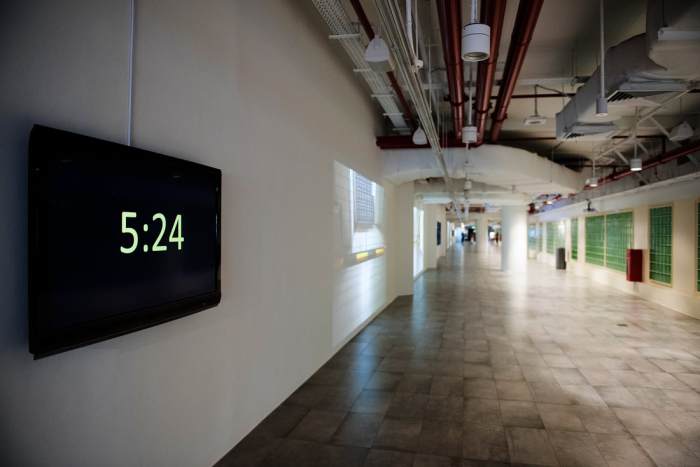With “i’m a steamroller baby cadence” at the forefront, this article delves into the captivating world of musical cadence, exploring its impact on the overall mood and atmosphere of a song. Through the lens of Death’s iconic track, we’ll uncover the intricacies of rhythm, meter, instrumentation, and lyrical interpretation, revealing how these elements combine to create a driving and relentless musical force.
Cadence in Music

Cadence is a musical term that refers to the progression of chords at the end of a musical phrase or section. Cadences provide a sense of closure and resolution, and they can be used to create a variety of different effects, from a feeling of finality to a sense of anticipation.
Types of Cadences
There are three main types of cadences: perfect, imperfect, and deceptive.
The catchy tune of “I’m a Steamroller Baby” might have you wondering about its origins. While we don’t have the answer to that, we can tell you where the equally upbeat “La Gozadera” was filmed: here . Now, back to the steamroller baby!
- Perfect cadence: A perfect cadence is the most conclusive type of cadence. It consists of a progression from the tonic chord to the dominant chord, and then back to the tonic chord. This type of cadence is often used at the end of a piece of music to create a sense of finality.
- Imperfect cadence: An imperfect cadence is less conclusive than a perfect cadence. It consists of a progression from the tonic chord to the dominant chord, but then to a different chord, such as the subdominant chord. This type of cadence is often used to create a sense of anticipation or to lead into another section of music.
- Deceptive cadence: A deceptive cadence is a type of cadence that surprises the listener. It consists of a progression from the dominant chord to the subdominant chord, instead of the tonic chord. This type of cadence can be used to create a sense of humor or surprise.
Examples of Cadences in Popular Music, I’m a steamroller baby cadence
Cadences are used in all types of music, including popular music. Here are a few examples of cadences in popular songs:
- “I Want to Hold Your Hand” by The Beatles: The song ends with a perfect cadence.
- “Imagine” by John Lennon: The song ends with an imperfect cadence.
- “Bohemian Rhapsody” by Queen: The song uses a deceptive cadence in the bridge.
“I’m a Steamroller, Baby” Song

The song “I’m a Steamroller, Baby” by the death metal band Death is known for its heavy and aggressive sound, which is enhanced by the use of dissonance and chromaticism. The song’s lyrics are also quite dark and violent, dealing with themes of destruction and death.
The song’s cadence is characterized by its use of syncopation and irregular time signatures, which create a sense of urgency and chaos. The song also features a number of sudden tempo changes, which further add to the sense of instability and unease.
Cadence Types in “I’m a Steamroller, Baby”
- Perfect authentic cadence (PAC): This cadence is used at the end of phrases and sections to create a sense of closure. It consists of a dominant chord followed by a tonic chord.
- Imperfect authentic cadence (IAC): This cadence is also used at the end of phrases and sections, but it creates a less conclusive feeling than the PAC. It consists of a dominant chord followed by a subdominant chord.
- Plagal cadence: This cadence is used to create a sense of repose or relaxation. It consists of a subdominant chord followed by a tonic chord.
The use of these cadences in “I’m a Steamroller, Baby” helps to create the song’s overall mood and atmosphere of violence and destruction. The PACs are used to emphasize the song’s heavy and aggressive sound, while the IACs and plagal cadences are used to create a sense of unease and instability.
Rhythm and Meter
Rhythm and meter are two fundamental elements of music that work together to create a sense of time and movement. Rhythm refers to the pattern of sounds in time, while meter is the underlying framework that organizes these sounds into regular groups.
In “I’m a Steamroller, Baby,” the rhythm is characterized by a driving, relentless pulse. The song is in 4/4 time, meaning that there are four beats per measure and the quarter note receives one beat. The rhythm is mostly regular, with a strong emphasis on the first beat of each measure.
This creates a sense of forward motion and momentum.
Driving and Relentless Feel
The combination of the rhythm and meter in “I’m a Steamroller, Baby” contributes to the song’s driving and relentless feel. The regular pulse of the rhythm provides a steady foundation, while the strong emphasis on the first beat of each measure creates a sense of urgency and momentum.
This rhythmic drive is essential to the song’s overall energy and impact.
Instrumentation and Dynamics

The instrumentation in “I’m a Steamroller, Baby” is simple but effective, consisting primarily of drums, bass guitar, and electric guitar. The drums provide a steady and powerful beat that drives the song forward, while the bass guitar adds a thick and heavy bottom end.
The electric guitar is used for both rhythm and lead parts, and its distorted sound adds to the song’s aggressive and edgy feel.
Dynamics
The song also makes effective use of dynamics, with the volume and intensity varying throughout the track. The verses are played at a relatively low volume, creating a sense of anticipation. The chorus, on the other hand, is played at a much higher volume, with the guitars and drums crashing in to create a powerful and cathartic effect.
This contrast in dynamics helps to build tension and excitement throughout the song.
Lyrical Interpretation: I’m A Steamroller Baby Cadence

The lyrics of “I’m a Steamroller, Baby” are simple yet effective in conveying the song’s themes and imagery. The song follows the journey of a steamroller, a powerful and unstoppable force, as it rolls through the world, leaving an undeniable mark.
Themes
The song explores several themes, including:
- Power and strength:The steamroller represents raw power and the ability to overcome obstacles.
- Determination and perseverance:The steamroller’s relentless forward motion symbolizes determination and the ability to keep going despite challenges.
- Transformation:The steamroller’s ability to flatten and smooth the ground represents the transformative power of progress and change.
Imagery
The lyrics employ vivid imagery to create a memorable and impactful song:
- “I’m a steamroller, baby, I’m gonna roll all over you”:This line establishes the steamroller’s dominance and unstoppable nature.
- “I’m gonna flatten out your hills and make your valleys rise”:This metaphor suggests the steamroller’s ability to transform and reshape the world.
- “I’m gonna pave the way for the world to see”:This line highlights the steamroller’s role as a catalyst for progress and change.
Relationship to Musical Elements
The lyrics of “I’m a Steamroller, Baby” work in tandem with the song’s musical elements to enhance its impact:
- Driving rhythm:The steady, repetitive rhythm of the song creates a sense of momentum and power, mimicking the relentless motion of a steamroller.
- Loud and dynamic instrumentation:The use of brass instruments, drums, and electric guitar adds to the song’s energetic and forceful sound, reflecting the steamroller’s formidable presence.
- Contrasting dynamics:The song features sudden shifts in volume, from soft verses to loud choruses, creating a sense of drama and excitement.
Overall, the lyrics of “I’m a Steamroller, Baby” are a powerful and evocative exploration of themes such as strength, determination, and transformation. The vivid imagery and clever use of musical elements combine to create a memorable and impactful song that resonates with listeners.
Questions Often Asked
What is cadence in music?
Cadence refers to the progression of chords or notes that create a sense of resolution or closure in a musical phrase or section.
How does cadence contribute to the mood of a song?
Cadence can evoke a wide range of emotions, from feelings of stability and satisfaction to tension and anticipation.
What is the rhythmic structure of “i’m a steamroller baby cadence”?
The song features a driving and relentless 4/4 rhythm with a strong emphasis on the downbeat.